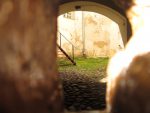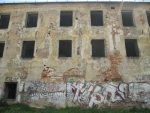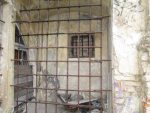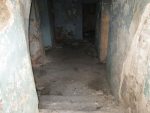Dominican walls: last resting place before execution
-
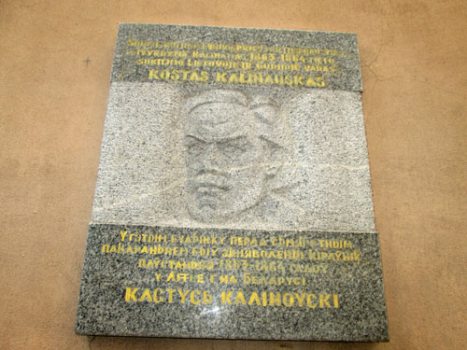
- Plaque in Vilnius commemorating Kastus Kalinouski
The death penalty becomes widespread during suppressing of uprisings and revolutions. So it was during the uprising under the leadership of Kastus Kalinouski when Russian courts sentenced 128 rebels to death, and the Governor-General of the North-Western Territory (present-day Belarus) Mikhail Muravyov was nicknamed “hangman”. The rebels were executed by a firing squad or by hanging, according to a special law.
During the uprising of 1863, the Dominican monastery in Vilnius was rebuilt as a prison. Here, Kastus Kalinouski was kept before the execution. According to the law, death convicts were to be executed within two days after the approval of a court judgment. It is here that the famous “Letters from under the Gallows” were written. Kalinouski was publicly hanged in Vilnius on 10 (22) March 1864 on Lukiški (Lukiškės) Square. Bodies of executed rebels were not given for burial (this tradition has survived in modern Belarus); they were secretly buried – brought to the Castle hill (Gediminas Mountain), the place where a Russian garrison was deployed.
Siarhei Dubavets in his article “Gediminas Hill – Kalinouski’s Grave” wrote that the execution took place at Lukiški Square on 10 March. The gallows, on which the hero was hanged, was standing between the former KGB building (now a museum of genocide) and the Conservatory.
After execution, the hero’s body was transported along the avenue - now Gedimino prospektas - right onto the Castle hill. There then was a Russian garrison. Since the place of burial of dead rebels immediately turned into a place of pilgrimage, it was decided to bury the hero in the territory of the garrison. Moreover, the site of the grave was a playground for a game of cricket. It was not until the World War I that the Russian garrison left Vilnius. In 1915, local archaeologists excavated the grave, described it and documented the burial of fifteen rebels. The bodies were identified by clothing, and the report, by the way, refers to the “Kalinouski’s moccasins”. And in 1921, the grave was turned into a memorial. It consisted of a large wooden cross created by local architect Anton Vivulski and a marble plaque with the names of all those buried there. In 1940, after Stalin gave Vilnius to Lithuania, the cross was burned, and the sign was gone without a trace.
Since then, the former "cricket ground" has become wasteland. At the top of the Castle Hill, it is located among the winding reliefs, so it is easy to find. If you have to climb the mountain by cable car, then you will reach the site.” (Siarhei Dubavets. “Gediminas Hill – Kalinouski’s Grave” // "Svaboda", 31 January 2008)
Now Lukiškės Square has a wooden cross. There is also a memorial plaque commemorating Kastus Kalinouski on the walls of the Dominican Monastery.
